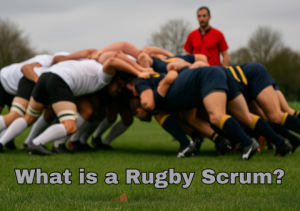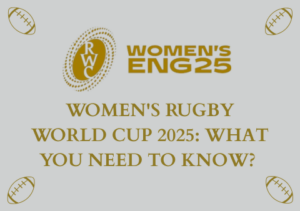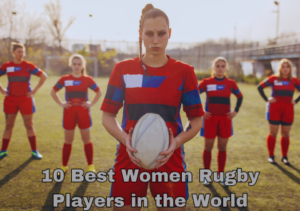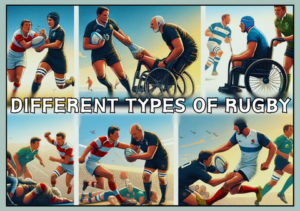Do you want to learn more about national rugby league positions? Want to know them by body type or numbers? If you allready know it, you can read about Difference Between Rugby League and Union.
How many players are there on a rugby league team and what are their positions?
There are 13 players on a rugby league team. The positions are fullback, wing, center, five-eighth, halfback, prop, hooker, second-rower, lock, interchange, and reserve.
What are the responsibilities of each position in rugby league?
The fullback is responsible for catching high kicks and starting the team’s attacking plays. The wings and centers are responsible for running with the ball and scoring tries. The five-eighth and halfback are the playmakers, responsible for directing the team’s attack. The props, hooker, second-rowers, and lock are the forwards, responsible for making tackles, carrying the ball, and providing support to the backs.
Which position is considered the most important in rugby league?
While all positions are important in rugby league, the fullback and the halfback/five-eighth are often considered the most important due to their roles in starting the team’s attack.
Which position requires the most physical strength in rugby league?
The prop position is often considered the most physically demanding, as it requires a lot of strength and stamina to make tackles and carry the ball.
Can players switch positions during a game?
Yes, players can switch positions during a game, particularly in the forwards where players may rotate positions to conserve energy or exploit weaknesses in the opposing team’s defense.
Rugby League is one of the most popular games played in more than 30 countries around the world. However, many people often confuse rugby union and rugby league. What you need to know is that both share more similarities than differences. However, one difference that stands out is the positions.
Keep reading!
Rugby League Positions
Rugby League is made of 13 players in each team with 4 substitutes on the bench. Each of the 13 players is usually assigned a position but they are generally divided into two types – forwards and backs.
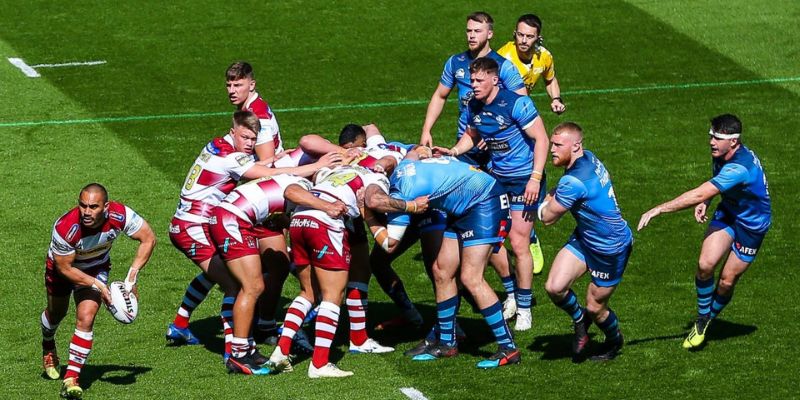
The Rugby League positions forwards are usually chosen for their size and strength. This is because they are muscular and strong. Thanks to their size and strength, forwards usually run with the ball making tackles or attacks. They create space for the backs who are smaller but faster.
Rugby Positions Names of Forwards On the Pitch
- Prop (front row forward)
- Hooker or dummy half
- Prop (front row forward)
- Second row forward
- Second row forward
- Lock forward
Rugby League Positions backs require ball-playing skills and speed rather than strength. As a result, they can take advantage of the field position gained by their forwards. Forwards usually operate in the center of the field while backs operate close to the touchlines.
Rugby Positions Names of Backs On the Pitch.
- Full back
- Right-wing threequarter
- Right center threequarter
- Left center threequarter
- Left-wing three quarter
- Stand-off half
- Scrum-half or half-back

In rugby league, the starting side usually wears the numbers that correspond to their positions. For example, the left-wing threequarter wears number 5 while the rugby league hooker or dummy half wears number 9.
What you need to know is that players can change their numbers in case of substitutions or position shifts during the game. In certain competitions such as the Super League, players usually receive a squad number to use all season. This is regardless of what positions they play in.
NRL locks are versatile players who play in the middle of the field and are responsible for both offensive and defensive duties, including tackling, ball-carrying, and providing support to their team’s halves and fullback. By the way, compared to Rugby Union, there is no 8 man rugby or rugby flanker position.
To sum it up, the national league positions has 7 backs and 6 forwards. The backs are usually numbered from 1 to 7 while the forwards are numbered from 8 to 13. In addition to the 13 players in each team, there are 4 to 5 substitutes who start the game on their team’s bench.
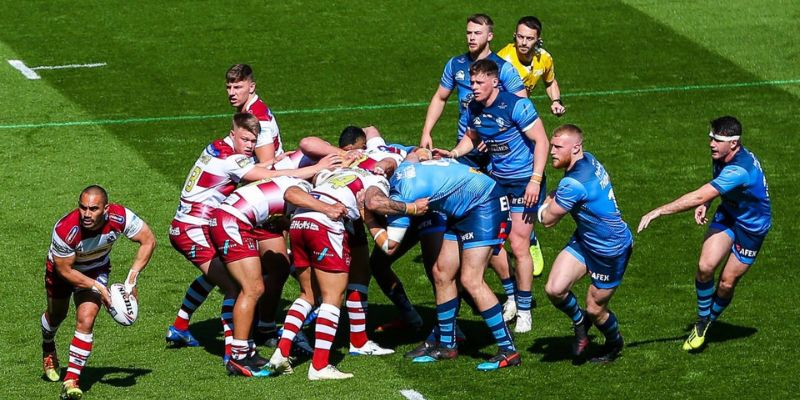
Rugby Positions By Body Type
Forwards
As aforementioned, players in rugby league are usually divided between forwards and backs. Forwards tend to be bigger and stronger as they depend more on their strength than play-making skills.
In the front row, you have a hooker who packs in the middle of the scrum’s front row. The hooker is strong and fast. As such, it’s their responsibility to operate at the dummy half position where they can start the play by passing the ball to a teammate or simply run. This can result in a try, a good field position, or a penalty.
A rugby league has two props. Rugby positions by body type are well reflected in props. Together with the hooker, they pack in the front row of the scrum.
The two props are the heaviest players on the team besides the hooker. In the game, their strength is usually utilized for running directly into the defensive line of the opposing team. Basically, they act as a battering ram.

Backs
In the back row, you’ve the second-row forward and loose forward. These players support the front rowers while attacking. They help create room for the backs due to their size. In rugby league, they’re nicknamed as tackling machines.
The backs consist of smaller and faster players. You have the fullback (numbered 1) who is the last line of defense. Revered for his speed and all-around ball-playing ability, the full-back can chase and tackle any player. Basically, he chases players who broke the first line of defense.
Next, you’ve the wings and rugby league center position placed closer to the edges of the pitch. There are two wingers positioned around the full-back and they are among the strongest players in a team. This is because they have the muscle to defend the full-back.
There are two centers that are medium-sized and positioned inside the rugby position wing and outside the halves. They are fast with good footwork and can make passes to their wingers.
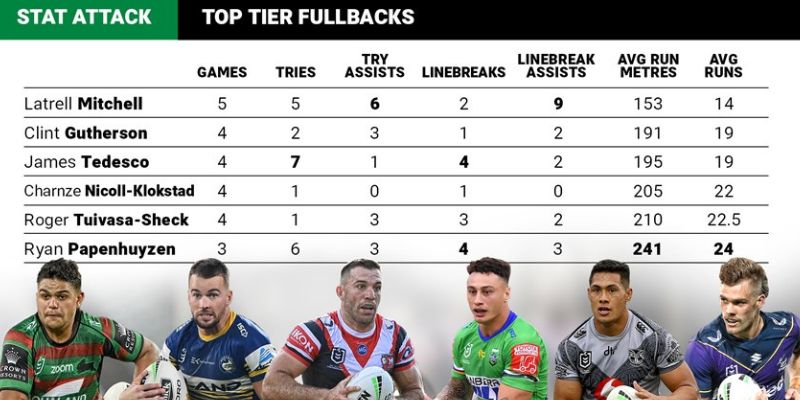
The two half-backs are usually positioned more centrally in the attack. While they’re medium-sized, they are their team’s main decision-makers.
Rugby Positions By Number
Number 1
There are very clear rugby positions by number. In rugby league, the fullback wears the No.1 jersey. The player is the pillar of defense in every rugby league game. So, he must be strong and be able to tackle players of the opposing team. He also needs to be good at catching the ball and have decent ball-playing skills.
Next, we have threequarters. In rugby league, there are four threequarters in total – two centers and two wingers. Threequarters are normally positioned close to the edges of the pitch.
Numbers 2-5
The wingers wear No 2 and No 5 jerseys and their role is to mark the opposing wingers as well as catch and return kicks made by the opposing teams. Jersey numbers 3 and 4 belong to the two centers. As part of the defense, they make the last ditch tackles and oppose the centers of the opposing teams.
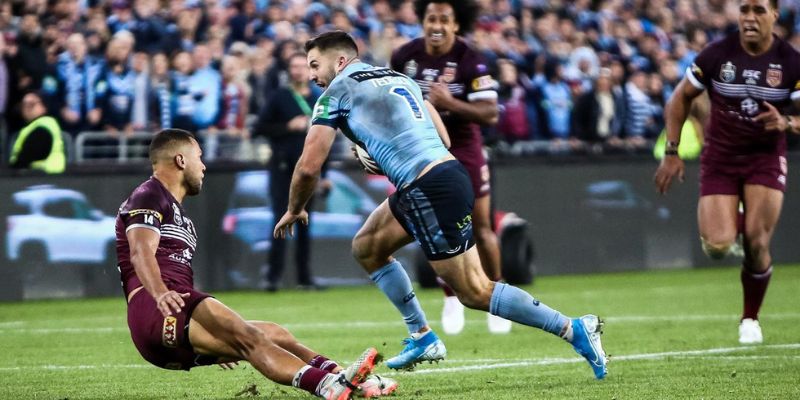
Numbers 6-7
In attack situations, they help create space for wingers. This is because their strongest assets are ball playing and speed. The stand-off half (Numbered 6) and scrum-half (Numbered 7) are the links between the forwards and backs. They are capable handlers, good passers, and runners.
Numbers 8-10
The front rowers include two props (numbered 8 and 10) and one hooker (numbered 9). Also called bookends, the two props pack the front row of the scrum. In rugby league, the props are the biggest and most powerful players.
The hooker or rake keeps the scrum from moving backward and winning possession of the ball. The player is also responsible for throwing the ball during the lineouts.

Numbers 11-13
Finally, we have the back row that consists of two-second rowers (11 and 12) and one loose forward (13). The rugby league props are agile and faster. This allows the players to take up a wider field position while defending and attacking.
Conclusion
In rugby league, the best and most important position is fullback. Rugby positions explained, the fullback is the most capable player, tasked with defending and attacking opposing teams.
Props are usually the most difficult positions. This is because the position requires lots of physical strength. The players must also have advanced ball-handling and tackle-making capabilities.
